Paleochristian and Byzantine Thessaloniki

Paleochristian and Byzantine Thessaloniki, Religious Tourism
Α World Heritage City!
Thessaloniki is an open museum. Any walk around the beautiful northern Greek city will reveal some new aspect of its eternal history to the traveller. Ancient memories, Roman influences and Byzantine splendour comprise a uniquely charming mosaic. UNESCO listed 15 early Christian and Byzantine monuments of Thessaloniki as World Heritage Sites, recognizing the city as one of the most important to the historical memory of humankind.
The Rotunda
The Rotunda is one of the most imposing monuments of Thessaloniki. As its name suggests, it is a circular structure, which impresses with its powerful architectural style and the exquisite sacred art which adorns its interior. The construction of the Rotunda was completed under Caesar Galerius in the 4th century AD. It belonged to a large architectural complex, which also included a race track and a palace.
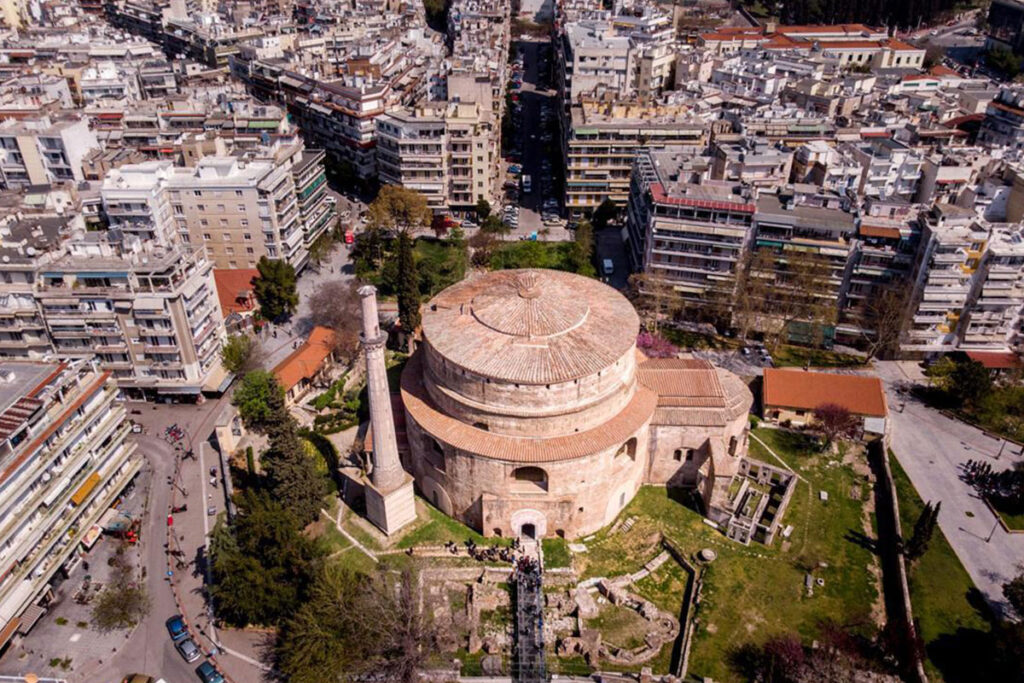
When Christianity prevailed, the Rotunda served as a “Martyrium”, a shrine where the relics of suffering martyrs were held and revered. The mosaics are comparable to those of Ravenna in Italy for their power and beauty. Created in Thessaloniki, they are the oldest surviving examples of the East.
Paleochristian and Byzantine Thessaloniki
The Acheiropoietos Church (Panagia Acheiropoietos)
The Acheiropoietos Church owes its name to an icon of the Virgin Mary, (‘Acheiropoietos’ meaning “made not by human hands “), which was kept in the church. It is one of the first churches of Christianity, founded sometime between 450 and 475 AD. It is an example of an early Christian three-aisled timber roofed basilica. It stands on Agia Sophia Street, opposite the Makedonomachon Square Park.
The mosaics, murals , the ornamentation and the portable icons in the Acheiropoietos Church are a veritable treasury of sacred art.
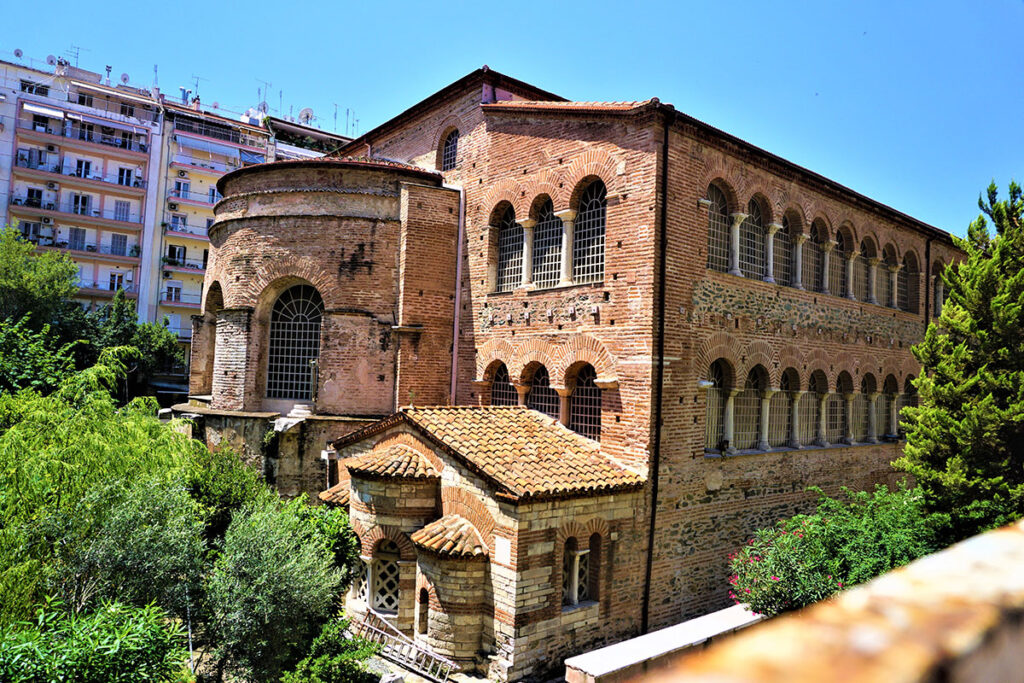
Saint Demetrius Church (Agios Dimitrios)
The great church dedicated to the ‘stratēlatē’ (military leader) Agios Demetrius is to be found on the street of the same name. It is a five-aisled basilica with a transept. The paintings and carved marble ornamentation of the church show exquisite artistry. Today’s temple was built in the 7th century AD under the supervision of Bishop Ioannis on the ruins of an older church. Agios Demetrius is the patron saint of Thessaloniki, and the relationship of the people of Thessaloniki with the saint is a strong one. His relics , which had been kept in the Abbey of San Lorenzo in Campo, Italy, were brought back to Thessaloniki in 1978. In the basement of the church and the crypt there is a permanent exhibition of sculptures, column capitals, parapets and other church artefacts.
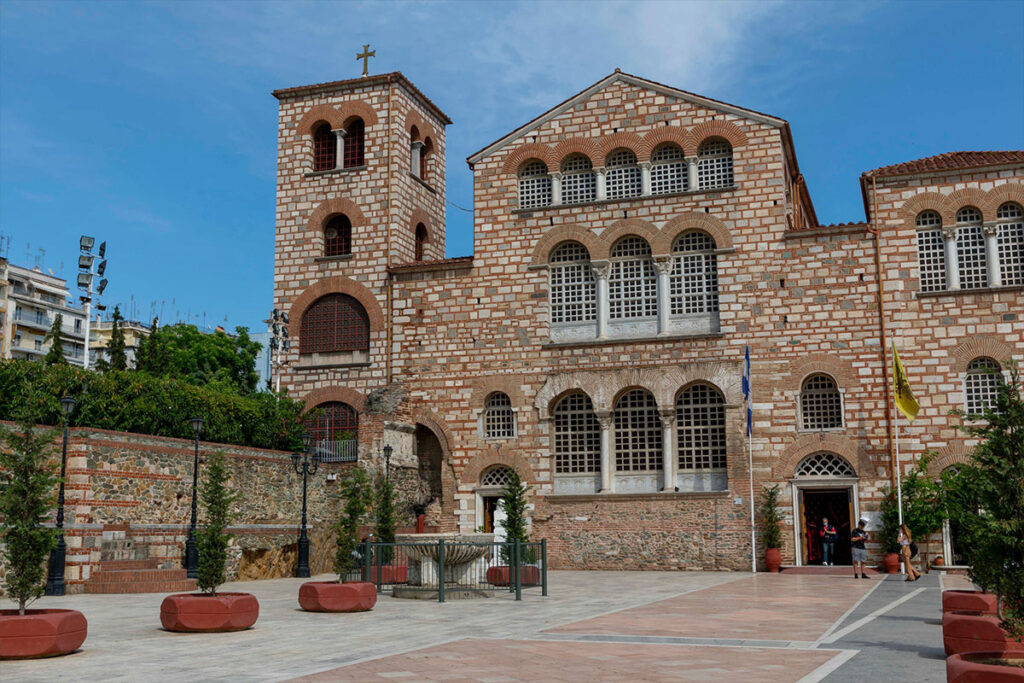
Paleochristian and Byzantine Thessaloniki – Religious Tourism
Hosios David Church (Latomou Monastery)
The old ‘katholikon’ (main church) of the Monastery of Latomou, which today is a church dedicated to Hosios David, is located in the beautiful Ano Poli (‘upper town’) of Thessaloniki. It was built at the end of the 5th century AD, and originally dedicated to Jesus Christ. The mosaic in the apse depicts a scene, unlike anything seen elsewhere. It shows the vision of Ezekiel of Christ Emmanuel, that is, Christ as a beardless young man, seated on a rainbow. The composition also depicts Ezekiel himself, as well as the Prophet Habbakuk.
Paleochristian and Byzantine Thessaloniki
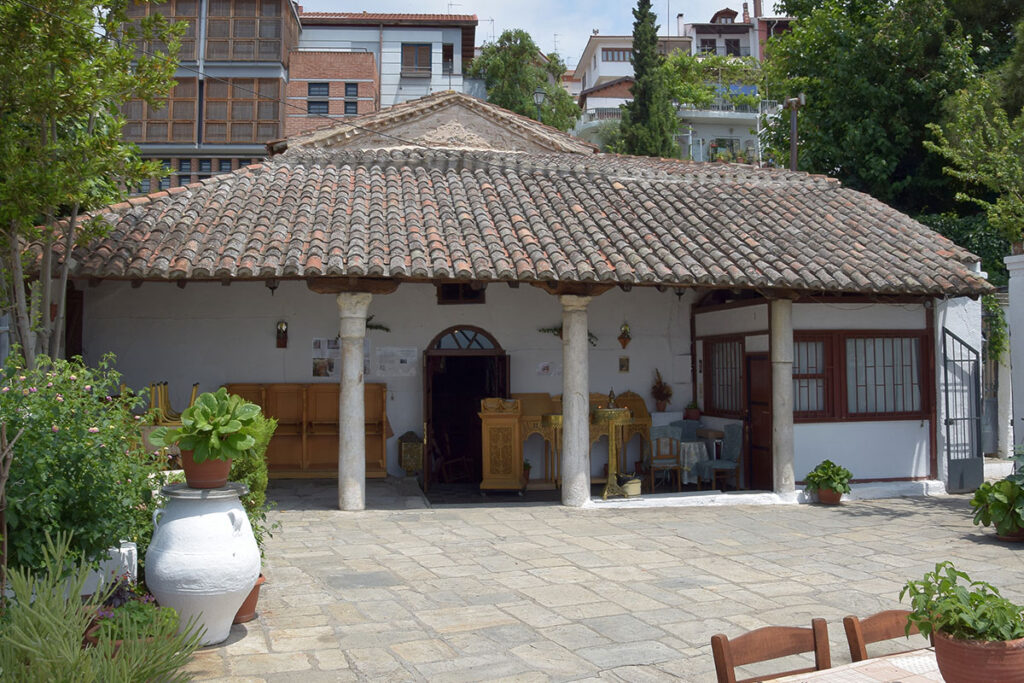
Agia Sophia Church
Agia Sophia was built in the 8th century AD on the site of an older church which was destroyed by an earthquake. Since that time and until the present day it has been the spiritual beacon of Thessaloniki with an unbroken history of active presence . It is a basilica type church with a domed roof. The mosaics, tesserae and religious paintings in the church are exceptionally beautiful.
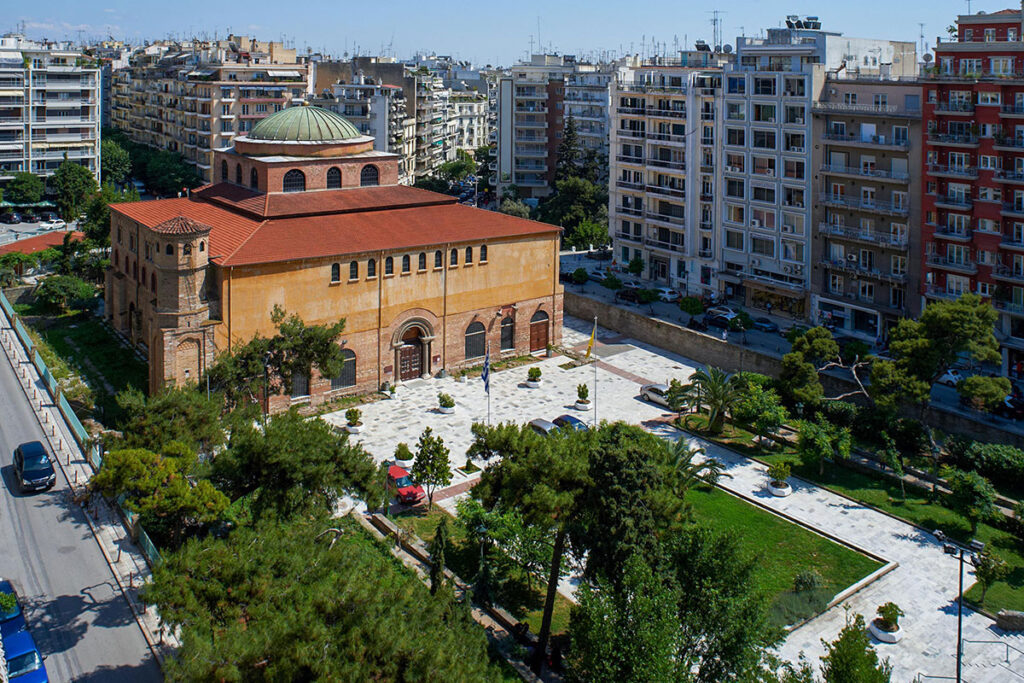
Panagia Chalkeon Church
According to the founder’s inscription above the west entrance, the Church of Panagia Chalkeon (Chalkeon being the word for coppersmiths, who worked in the area) was built in 1028 by the Prōtospatharios (a name for Byzantine Empire officials) Christopher, katepánō (master and ruler) of Lombardy. It is to be found in the old market square (Archaias Agoras). The walls of the church are of bright red brick – hence its nickname – the “Red Church”. It is built in the classical Byzantine style, with four main columns and three cupolas. Its exterior is richly decorated with arches and pilasters, which complement the flowing grace of its architectural style. Its marble carvings have been preserved to the present day intact, as have the frescoes which ornament it.
Paleochristian and Byzantine Thessaloniki – Religious Tourism
The magnificent church of St. Panteleimon lies in the centre of Thessaloniki, at the junction of Egnatia and Iasonidou Streets. Its construction dates from the late 13th century AD. The Church is associated with the Monastery of Panagia Perivleptos (Our Lady Who Sees All), which was also known as the Monastery of Father Isaac. Of the original decoration only the murals in the ‘diaconicon’ (the Deacon’s place in the Sanctuary or Sacristy) and the ‘prothesis’ (the Table of Oblation, in the NE side of the Altar where the elements for the Holy Communion are prepared) to the left and right in the apse still survive.
Paleochristian and Byzantine Thessaloniki
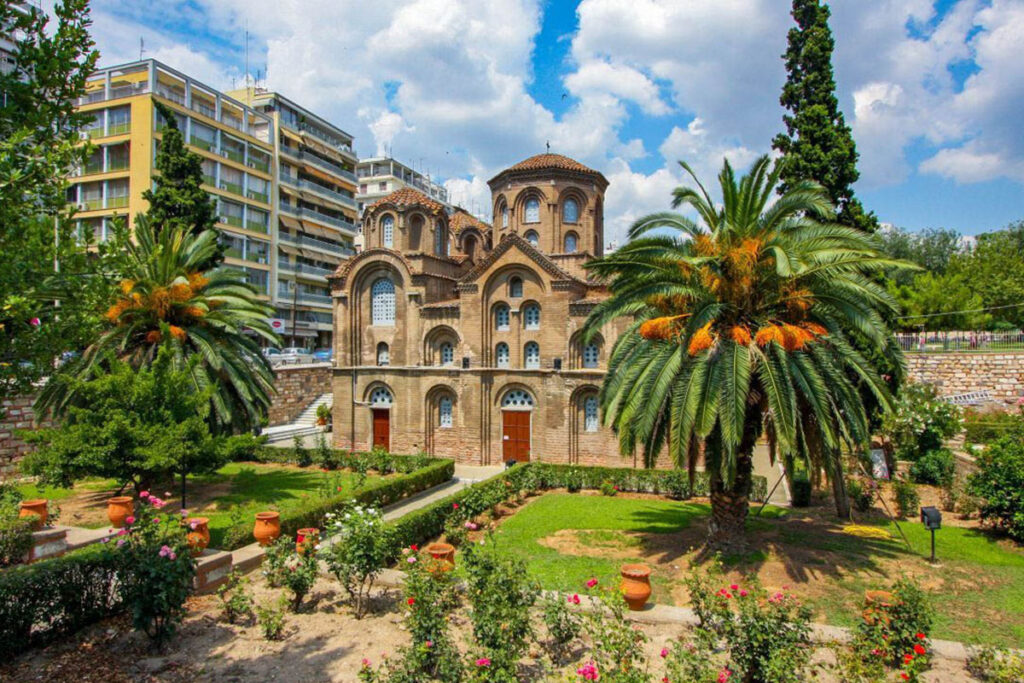
Agioi Apostoloi Church
The Church of the Holy Apostles is a fine sample of architecture dating to the Byzantine Palaeologian period. Originally it was the katholikon (main church) of a monastery dedicated to Theotokos [the Virgin Mary]. It is situated on Olympou Street, in the western quarter of Thessaloniki. It was built in 1310 under the supervision of the ecumenical Patriarch Nephon I. During the Ottoman period it was turned into a mosque and the murals were covered up once the gold leaf had been removed. In 1926, work started for the first time to remove the layers of paint and restore the iconography of the church. In 2002 this monumental task was finally completed and the murals were fully restored to their former glory.
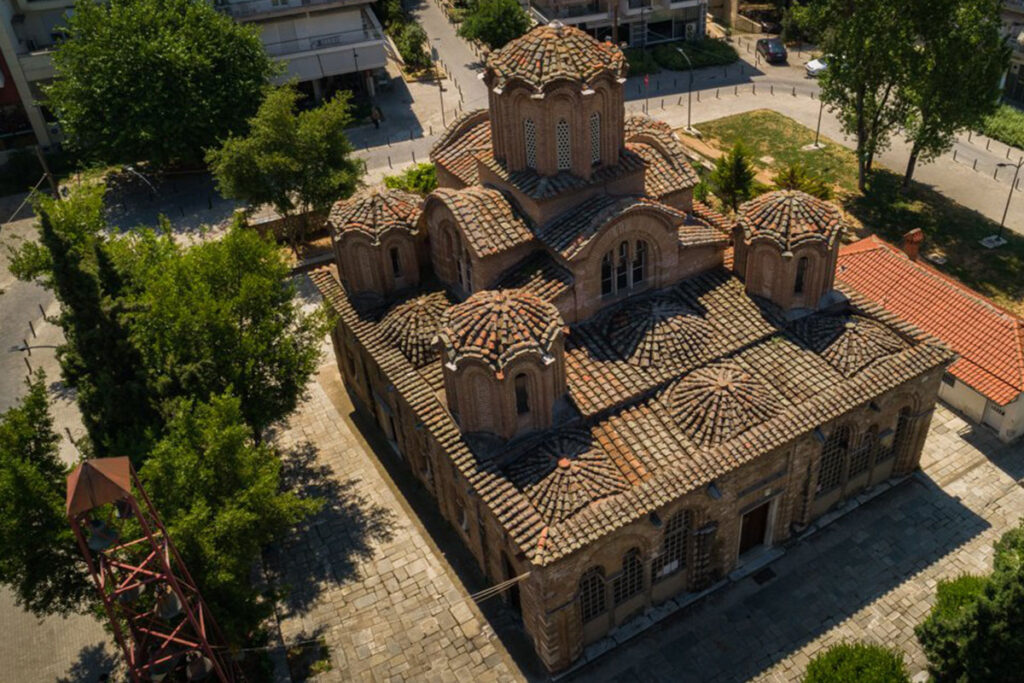
Saint Nikolaos Orphanos (Agios Nikolaos Orphanos)
Agios Nikolaos Orphanos was a dependency and the principal church of the Vlatadon Monastery. It is located in Ano Poli (the ‘Upper City’) at the eastern walls. The interior decoration of the church is one of the best maintained collections of iconography in Thessaloniki. The liturgies, Christ’s miracles, multiple iconographic depictions of the Virgin Mary and the Saints decorate the walls of Agios Nikolaos with great artistry, creating a deeply moving atmosphere of devotion.
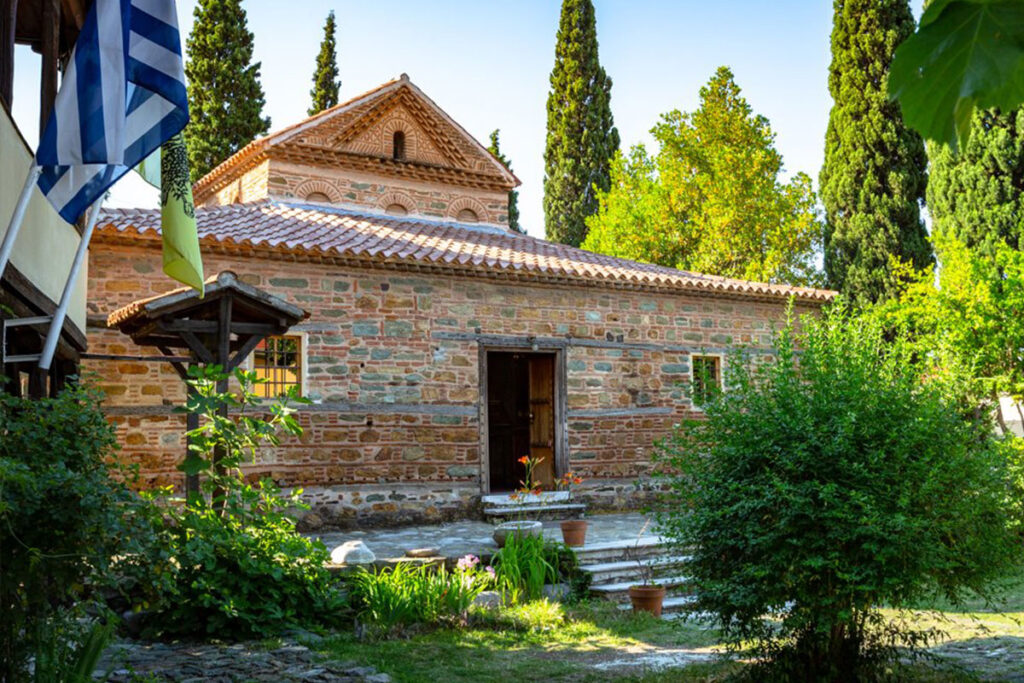
Agia Aikaterini (St Catherine)
The Macedonians School of Iconography warrants its own separate chapter in the history of Byzantine art. The icon painters of Macedonia were known for the intensity of colour they used in their compositions, as well as a completely different approach to the depiction of the human body, which they show to be strong and robust, a true and powerful dwelling place for the spirit. Agia Aikaterini, like many other churches in Thessaloniki, is decorated by craftsmen working in the Macedonian style. The ornate iconographic paintings of the church have the strength to captivate the hearts of visitors with their power and intensity.
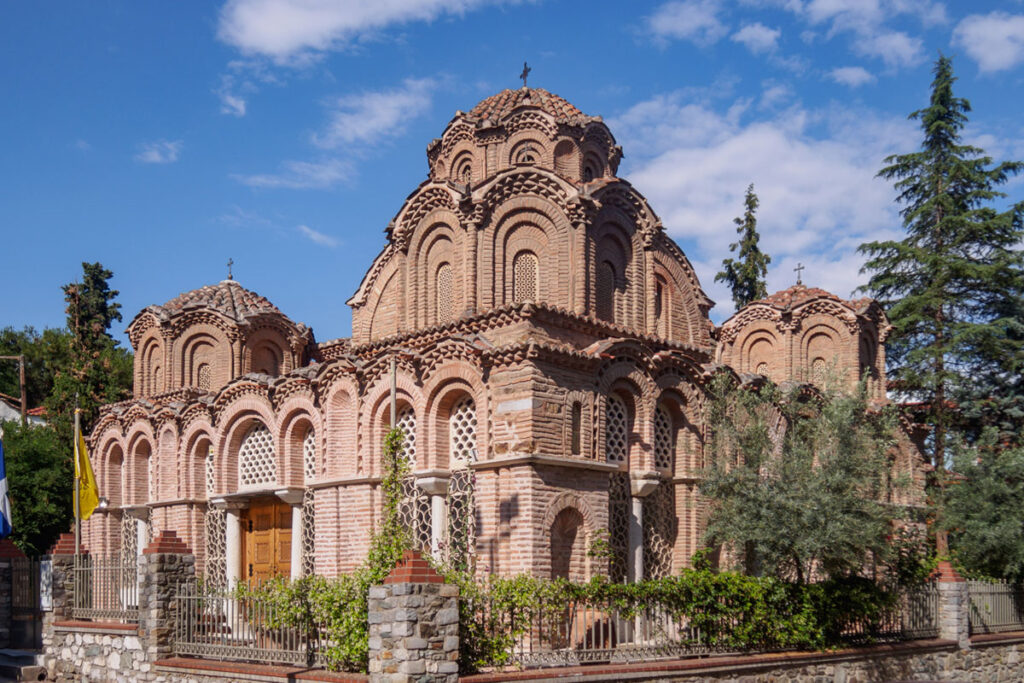
Metamorphosis Sotiros Church (Transfiguration of the Saviour Church)
The city was an important centre of hesychasm (monk-like devotion and contemplation) and a site of spiritual renaissance in Christendom. Charismatic personalities such as Gregorius Palamas and the monks Dorotheus and Markos Vlatis, the founders of the Monastery of Vlatades, were active in the city of Thessaloniki at the time. The reinforcement of religious sentiment was a strategic issue on which the very existence of the Byzantine Empire depended. That is why the famous Anna Palaiologina arrived in Thessaloniki herself and stood by to oversee the repairs and restoration of the old churches and the building of new ones. It was during this time that the Church of Pantocrator Sotir Christos was built. It still stands untouched by time in the northern quarter of Ano Polis.
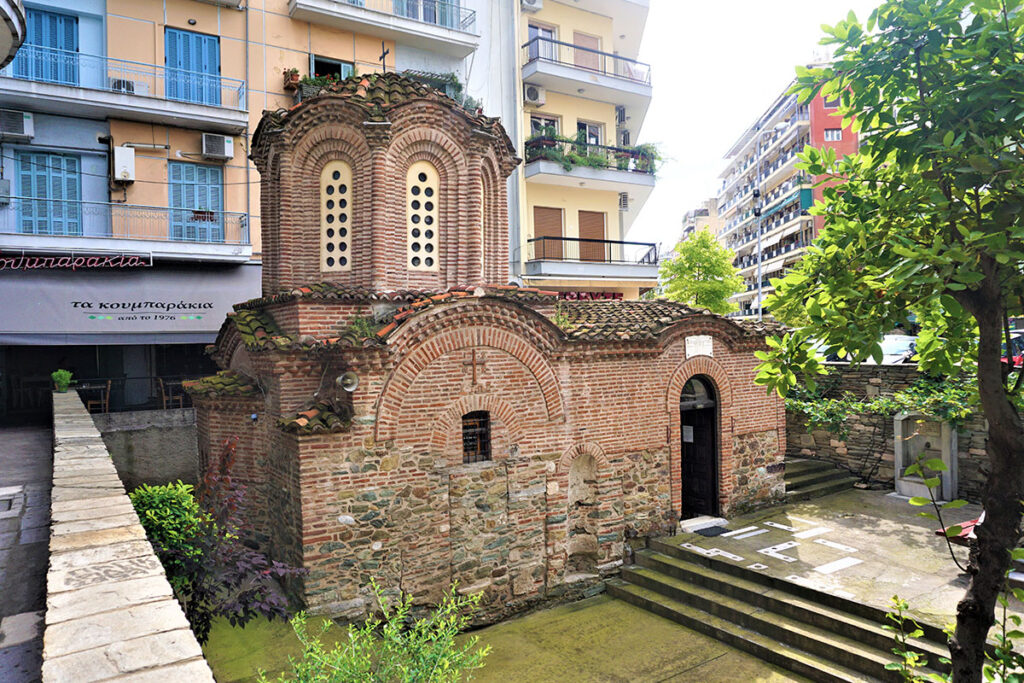
Vlatadon Monastery
Vlatadon Monastery, also known as Tsaous Monastir during Ottoman Occupation, is located in the Upper Town, just 80 metres from Heptapyrgion (Seven Towers) Fortress. Tradition has it that the monastery is built on the spot where Paul the Apostle delivered his teachings during his stay in Thessaloniki. It is the only Byzantine monastery which is still active today. Reference to the monastery complex was made in 1405 by the Russian traveller, Ignatius of Smolensk. The monastery flourished in the 15th century, and it is thought that it may have also functioned as a place of Islamic worship during Ottoman times.
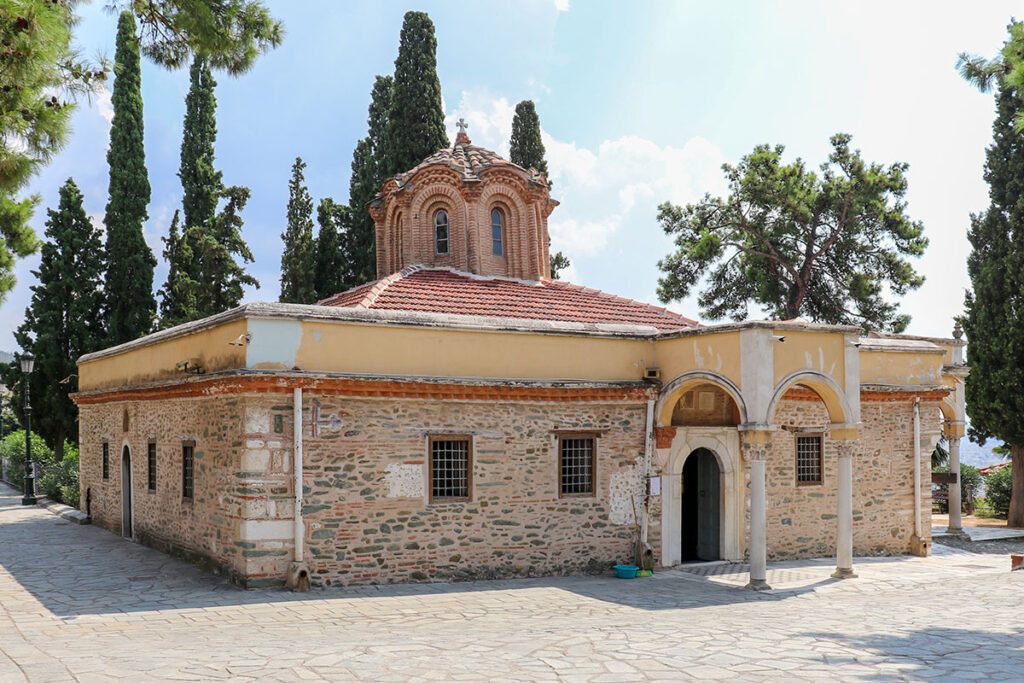
The Church of the Prophet Elias
The church of Prophet Elias [Profitis Ilias] is on the corner of Olympiados and Profitis Ilias Streets in Ano Poli (Upper Town). Built on a natural hill, it once overlooked the whole of Thessaloniki. It is built in the Mount Athos architectural style, with an ornate dome and characteristic decorative brickwork features. The restoration of the church was undertaken during the period 1956-1961. The artistry and style of the wonderful murals that adorn it were a significant influence on the later Serbian school of iconography.
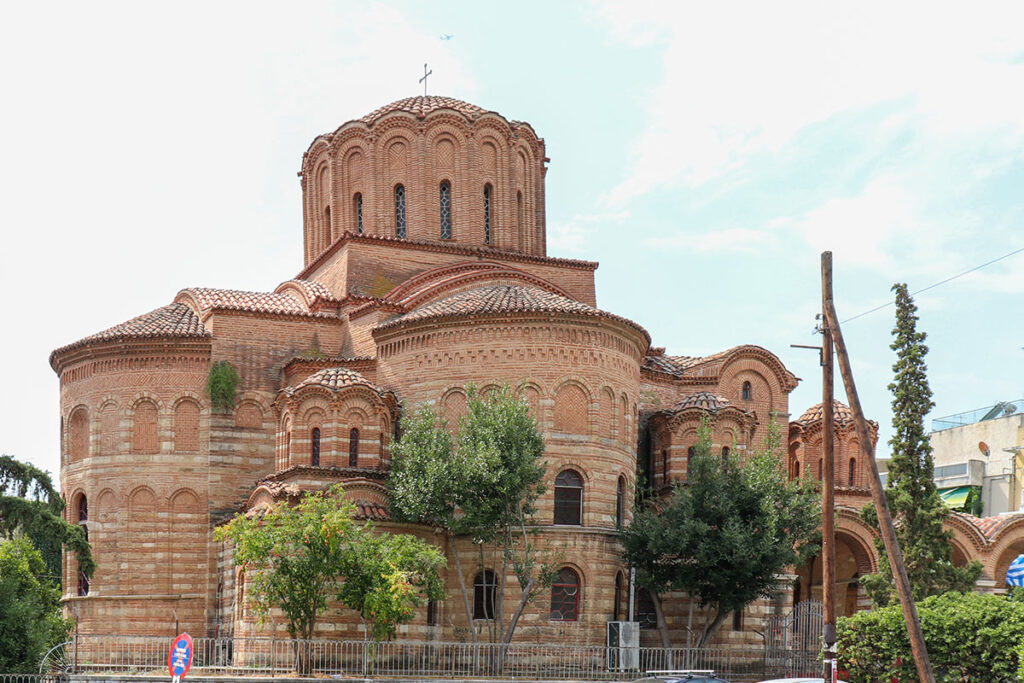
The Byzantine Bath
The Byzantine Baths in Thessaloniki are the only ones to have survived in Greece. They are situated in Ano Poli (Upper Town), nestling between the tall buildings. Construction is thought to have been completed in around 1300 AD, and they were in continuous operation for seven centuries. They only closed down in 1940, and are still considered to be a living part of the social history of the city.
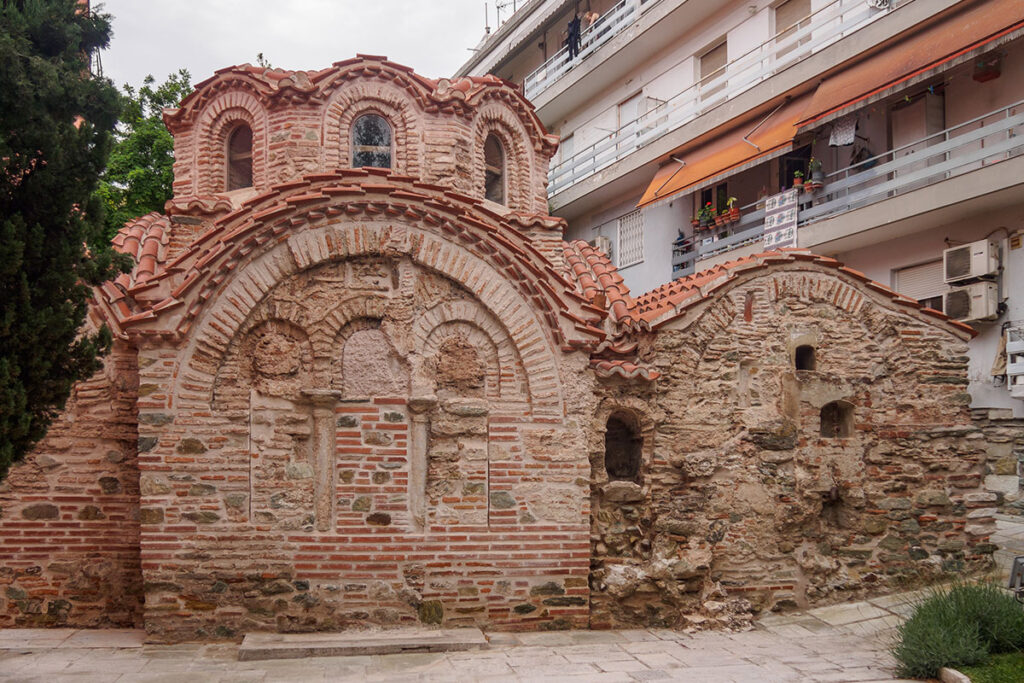
The walls of Thessaloniki – Paleochristian and Byzantine Thessaloniki
The Byzantine wall of Thessaloniki follows the Roman one. Then the town was saved from the repeated incursions of the Thracian races in the 1st century BC. The history of the city is inextricably linked with its walls. With many towers, with frequent restorations, with continued care of the governors of Thessaloniki, they always protected the lives of its inhabitants within their stone embrace.
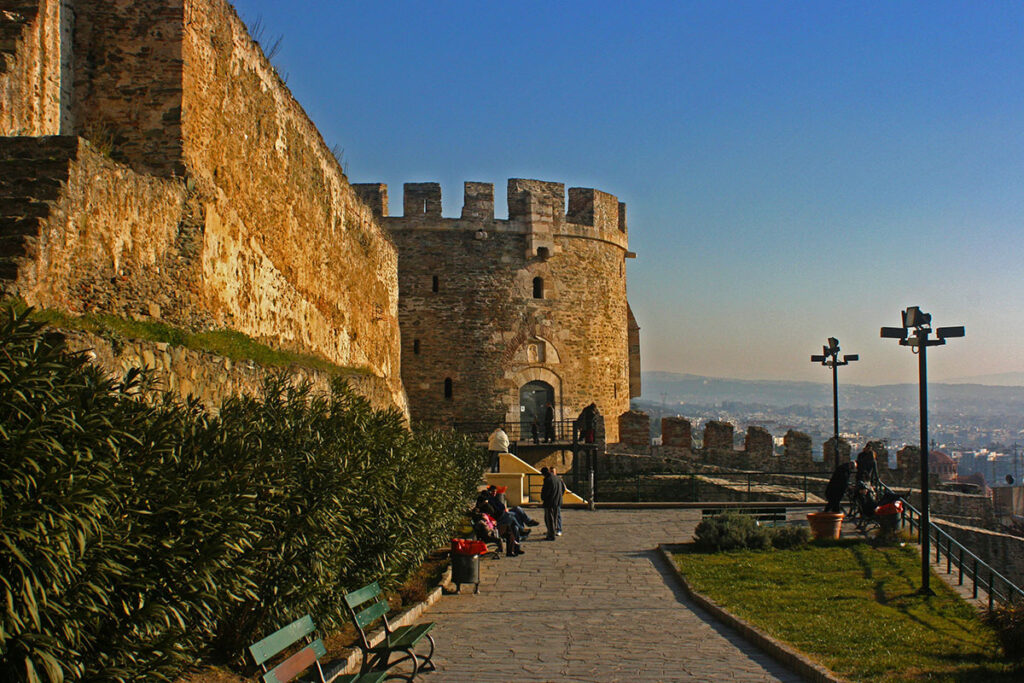
The Heptapyrgion (Seven Tower Fortress)
which dominates the north-eastern perimeter of the walls is one of the most iconic fortified complexes in the Balkan region. The enclosed core of the castle was completed in the mid-Byzantine period. Today its interior has been renovated and it is under the jurisdiction of the Ministry of Culture and Tourism.
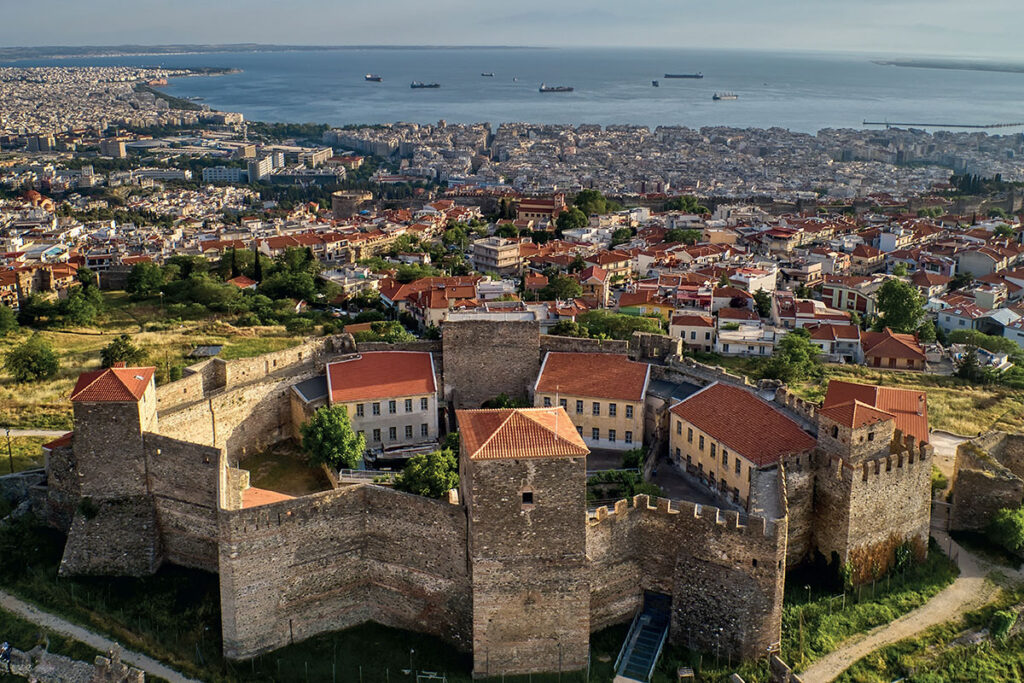
The Heptapyrgion (Seven Towers) Fortress which dominates the north-eastern perimeter of the walls is one of the most iconic fortified complexes in the Balkan region. The enclosed core of the castle was completed in the mid-Byzantine period. Today its interior has been renovated and it is under the jurisdiction of the Ministry of Culture and Tourism.
Paleochristian and Byzantine Thessaloniki

